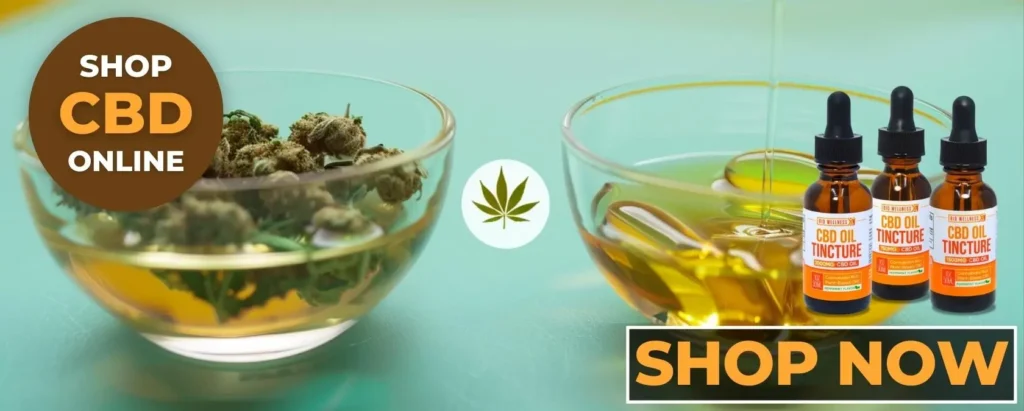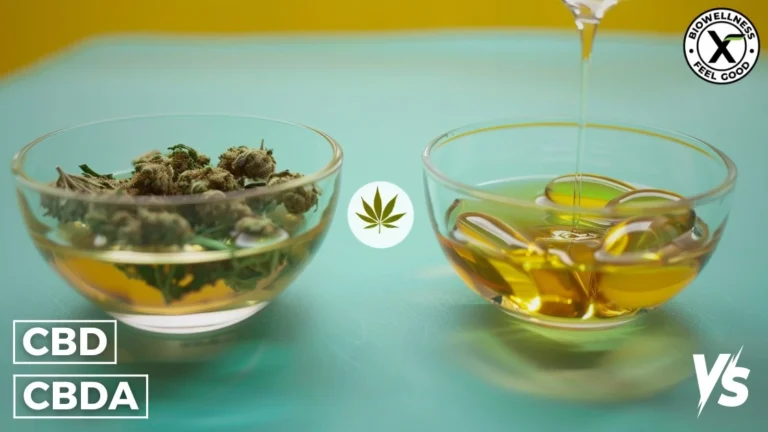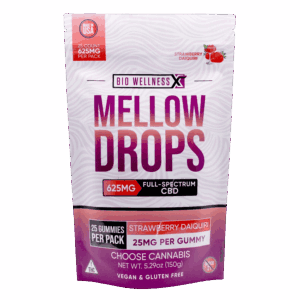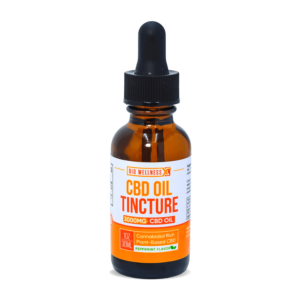key points
If you’ve been shopping for high-quality CBD products, you might have seen a bottle of tincture labeled with “CBDa.” This article will explain what CBDa is, compare it to CBD, and discuss the benefits of CBDa versus CBD. We’ll also answer common questions about this lesser-known cannabinoid. By the end of this article you should have a full understanding of the similarities and differences between CBDa vs CBD.
CBD – A Brief Overview
CBD stands for cannabidiol. It is one of over 150 cannabis compounds, or cannabinoids, present in both the hemp and marijuana subspecies of the cannabis sativa plant and probably the most common of them all.
While Delta-9 THC is the psychoactive compound found in traditional cannabis products, CBD is found in higher concentrations in hemp plants and is not psychoactive. Still, CBD has been found to have potential therapeutic benefits, which is why it has become a popular wellness supplement, along with other products like CBD oil.
What is CBDa?
CBDa, which stands for cannabidiolic acid, is a cannabinoid found in cannabis plants plants. Unlike THC, consuming CBDa or CBD will not induce a high feeling.
While CBD is more widely known for its numerous benefits, it’s important to note that CBDa also offers noteworthy benefits. The spotlight may have been on CBD, but we will look into CBDa’s benefits later.
When consumed, cannabinoids like CBD and CBDa have the potential to interact with the body’s endocannabinoid system (ECS) and produce a wide range of effects.
Connection With The Endocannabinoid System
The endocannabinoid system (ECS) is a sophisticated network of cannabinoid receptors, enzymes, and endocannabinoids (cannabinoids produced within the body). The primary function of the ECS is to maintain balance, known as homeostasis, within the body. The receptors and enzymes in the ECS naturally interact with endocannabinoids to regulate vital functions within the human body, and they also interact with cannabinoids such as Delta-9 THC, CBD, and CBDa.
Typically, a cannabinoid binds to cannabinoid receptors, triggering specific responses within the body’s various systems. However, CBDa functions differently by potentially preventing the enzymes within the body’s endocannabinoid system from breaking down other cannabinoids. This characteristic makes CBDa a highly beneficial supplement as it enhances the impact of other therapeutic cannabinoids on the body.
CBDa vs. CBD: Similarities & Differences
It’s understandable if the relationship between cannabidiol (CBD) and cannabidiolic acid (CBDa) seems confusing. CBDa, an acidic cannabis compound, serves as a precursor to CBD, undergoing conversion into CBD through exposure to heat, light, and oxygen.
The therapeutic benefits and applications of these two compounds are fairly similar. But one key difference is that studies suggest CBDa may be easier for the body to process. So CBDa gummies, compared to CBD gummies, might show better results due to the body’s ability to digest the acidic cannabinoid.
While we’re on the subject, we feel i’s important to note that there are other major cannabinoid precursor compounds as well.
THC originates from tetrahydrocannabinolic acid (THCa), while CBC (cannabichromene) is derived from CBCa (cannabichromenic acid). These acidic cannabinoids, including THCa and CBCa, stem from a compound called cannabigerolic acid (CBGa), often referred to as “the mother of all cannabinoids”. CBGa serves as the precursor to CBDa, THCa, and CBCa, which in turn act as precursors to all other cannabinoids. CBD is produced from CBDa through a process known as decarboxylation, which we will discuss next.
Process of Decarboxylation (CBDA TO CBD)
Decarboxylation of a Cannabis plant is the process that changes acidic cannabinoids like CBDa and THCa into CBD and THC. Simply put, cannabinoid acids have a “carboxyl” group, which is a ring of carbon, oxygen, and hydrogen atoms. When the hemp plant is heated, the carboxyl in CBDa is released, resulting in the conversion of CBDa into CBD. Light and oxygen can also cause decarboxylation, but not as quickly. Fresh, raw hemp flowers contain mostly CBDa, not CBD. It’s only after decarboxylation that CBD becomes the most prominent cannabinoid.
Benefits
Since 2018, when industrial hemp cultivation became federally legal, the availability of CBD has increased a lot. More and more people have tried CBD and appreciated its unique benefits, so it has become very popular. But what about the potential benefits of CBDa?
CBDa helps with exercise-induced inflammation and everyday aches and pains. It has a similar structure to over-the-counter inflammation-relieving products, which is why scientists think it may help reduce inflammation. Also, CBDa might be more effective than CBD because it enters the bloodstream more easily and in higher amounts.
CBDa benefits include anti-inflammatory properties, anti-nausea effects, and potential anti-anxiety effects. Preliminary research suggests it may also inhibit breast cancer cell growth and provide therapeutic potential for chemotherapy patients. Like we talked about a bit earlier, CBDa might be more effective in these benefits due to its ability to be more easily absorbed by the human body.
Types Of CBD
The three main types of CBD oil are full-spectrum, broad-spectrum, and CBD isolate. Let’s find out which one is most likely to contain CBDa.
Full Spectrum CBD Oil
Full-spectrum CBD oil contains all the cannabinoids from the hemp plant, including a small amount of THC (no more than 0.3%). People like this type of CBD oil because it can create the “entourage effect,” where different cannabinoids, like CBD and THC, have a stronger combined effect than when used individually. Depending on how it’s made, full-spectrum CBD oil may also contain CBDa.
Broad Spectrum CBD Oil
Broad-spectrum CBD oil contains a variety of cannabinoids but typically has minimal THC and may lack other cannabis compounds found in full-spectrum CBD oil. It may also contain some CBDa, depending on the heat used during the extraction process.
CBD Isolate (Pure CBD)
CBD isolate is pure CBD that comes in a crystallized powder form. It contains only CBD and no other cannabis compounds. It can be used to make CBD oil without any additional cannabinoids. CBD oils made with pure isolated CBD are less likely to contain CBDa.
Buying CBDa Oil And Other CBDa Products
CBDa can change to CBD when exposed to too much heat, so it needs special treatment during production. Some CBD brands sell raw hemp oil to keep the CBDa concentrations high, which may be the best method. However, you have other options besides raw hemp extract or raw cannabis juice. You can find CBDa tinctures, oils, and capsules, just like you can find CBD versions of these.
High-Quality CBDa
The hemp industry is still pretty new in the U.S. and not very regulated yet. Before you start using CBD or CBDa, it’s important to know how to find good, high-quality products. You should be able to tell the difference between reliable CBD companies and shady ones. Look for companies that offer the following when buying CBDa and CBD:
Third-party testing
Trustworthy CBD companies use independent labs to test their products and make the results available to customers online as certificates of analysis (COAs). This helps to ensure the exact levels of cannabinoids in their products.
Organically grown cannabis plants.
Cannabis plants can take in harmful substances like heavy metals and pesticides from the soil. If the soil is contaminated, the hemp will absorb these toxins. When hemp with toxins is used to make cannabinoid oil, the toxins end up in the oil and can be consumed by people. It’s important to make sure that any cannabinoid supplement you use is of high quality, whether it’s CBD oil or CBDa in its raw form.
Final Thoughts About CBDa and CBD
Understanding the differences between CBDA and CBD can significantly enhance your ability to choose the most suitable cannabinoid product for your needs.
As research continues to uncover the therapeutic potential of CBDA, its role in the wellness industry is likely to grow. By staying informed about both CBD and CBDA, you can make better decisions about incorporating these cannabinoids into your health and wellness routine. Whether through raw hemp extracts, tinctures, or other forms, CBDA offers a unique and valuable addition to the array of cannabinoid options available today.

Legal Disclaimer:
By reading this information presented, you agree to release the author of any liability that comes from using this data. This post contains no legal advice. Claims about cannabinoids have not yet been approved by the FDA. Cannabis laws and regulations are subject to change. Read the full legal disclaimer here.
Other Topics You Might Want To Read:
- Delta-8 vs. Delta-10 For Pain: Which Works The Best?
- CBD for Vertigo – Discover the Potential
- Finding the Best CBN Gummies for Sleep Support
- What Are the Best Forms of CBN Available Today?
- Organic 50mg Delta-8 Gummies: Benefits and Effects
- CBG and CBD: Differences and Similarities
- What is Full Spectrum THC?
- 100mg Delta-8 THC Gummies Review From BioWellnessX
- Indica vs Sativa Edibles: What’s the Difference?
- Delta 8 Edibles Review And Where to Buy Them!
- Is Delta-8 or CBD Better For Pain? The Top 5 Differences!
References:
- Cannabidiol and Intestinal Motility
- Delta-8-THC: Delta-9-THC’s nicer younger sibling?
- Consumer Experiences with Delta-8-THC
- Hemp Production and the 2018 Farm Bill – 07/25/2019 | FDA
- The Controlled Substances Act (dea.gov)
FAQs About CBDa and CBD
Raw cannabis juice is made from fresh, unheated cannabis plants, preserving the acidic cannabinoids like CBDA. Consuming raw cannabis juice is a way to intake these compounds in their natural form, which may offer various health benefits.
The cannabis sativa plant produces cannabinoids through the action of plant enzymes on precursor compounds. For example, cannabigerolic acid (CBGA) is converted into other cannabinoids like CBDA and THCA, which can further convert into CBD and THC.
CBDA is considered an overlooked bioactive compound because its therapeutic potential is still being explored by the scientific community. While CBD has gained widespread attention, CBDA’s benefits and uses are not as well-known.
Cannabinoid acids like CBDA and THCA are found in the raw plant and contain an acidic carboxyl group. When heated, they lose this group and convert to their neutral forms, CBD and THC, respectively, which are more commonly used in various cannabis products.
CBDA acts on the central nervous system by interacting with serotonin receptors, which can influence mood, anxiety, and nausea. This interaction suggests potential benefits for anxiety disorders and anti-nausea treatments.
Most CBD products don’t have much CBDa left after hemp is processed into CBD oil using heat. However, the amount of CBDa can vary in different CBD oils.









